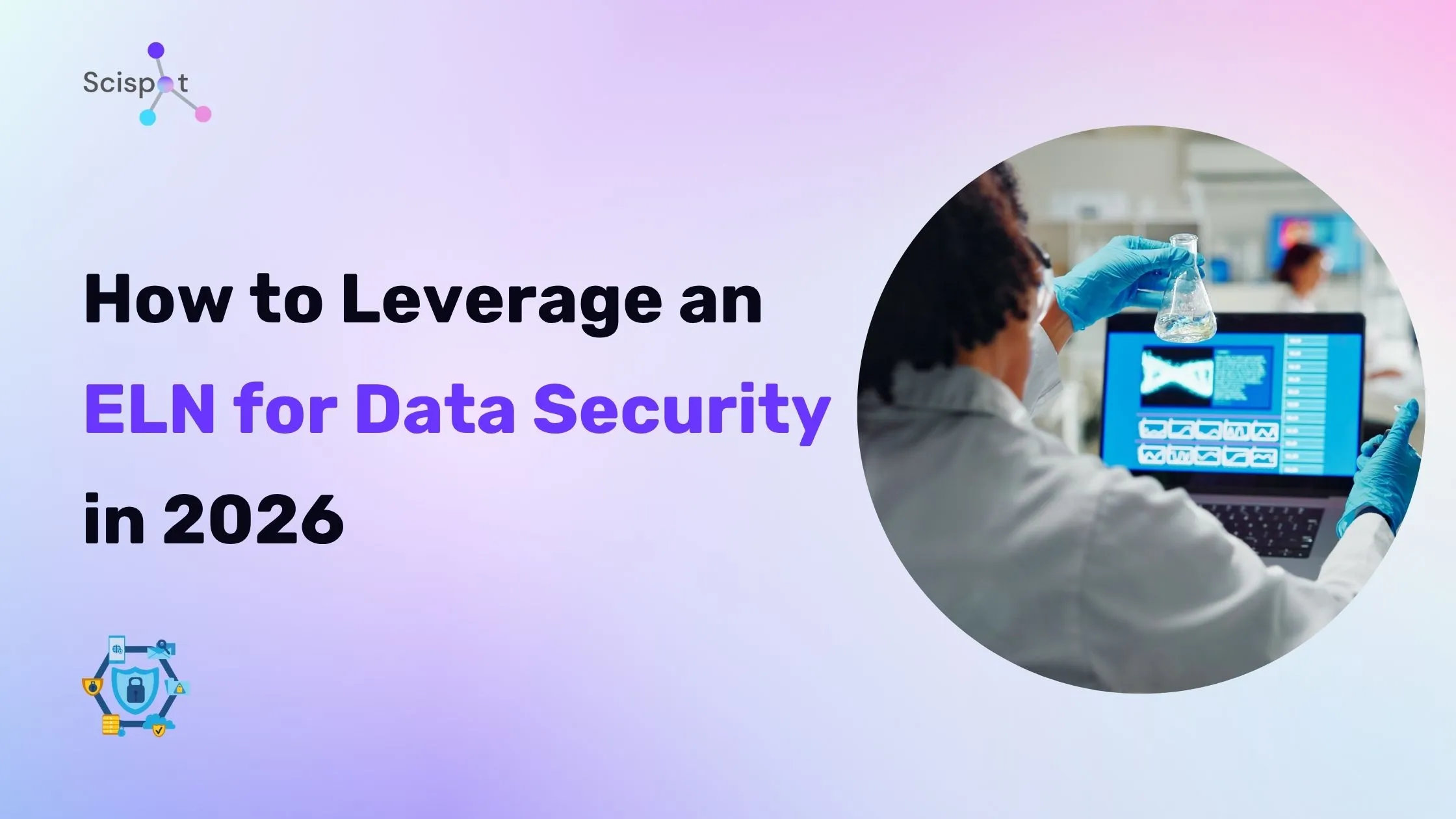Introduction
Lab data is more valuable than ever, but managing and protecting it has become increasingly challenging. Cyberattacks, stricter compliance requirements, and global collaboration demand smarter tools. An ELN data system isn’t just a convenience—it’s the key to ensuring lab data security while enabling innovation.
Here’s how an ELN helps labs stay secure, compliant, and efficient in 2026.
Real-Time Threat Detection: Protect Data at Every Step
Cyber threats are more sophisticated than ever. Labs handling sensitive data can no longer rely on reactive measures. ELNs built for lab data security continuously monitor for unusual activity and send real-time alerts to your team.
For instance, if an unauthorized user tries to access restricted files, an ELN immediately flags the activity. This enables labs to act swiftly, preventing breaches before any damage occurs. Proactive security updates also ensure your ELN stays ahead of emerging vulnerabilities, so your team can focus on research rather than patching systems manually.
Simplified Compliance: Automate the Burden
Navigating regulatory requirements like FDA 21 CFR Part 11 or GDPR can be daunting. ELNs simplify this process by automating compliance. Every action within the system is logged and saved, creating an uneditable history that can be quickly retrieved during audits.
Imagine a diagnostics lab processing patient data. With an ELN, compliance with HIPAA and ISO standards becomes seamless. Customizable compliance modules allow labs to adjust settings quickly, keeping workflows uninterrupted even as regulations evolve. This ensures labs can manage lab data securely while staying audit-ready.
Robust Encryption: Keep Data Safe Everywhere
Data security requires layers of protection. ELNs safeguard ELN data with AES-256 encryption for stored files and TLS 1.3 protocols for data in transit. This ensures sensitive information remains confidential, whether it’s saved in your system or shared with collaborators.
For example, a pharmaceutical lab sharing experimental results with a CRO can trust that data remains secure throughout the transfer process. These encryption measures are critical in maintaining trust and protecting intellectual property.
Role-Based Access Control: Collaborate Without Risk
Modern research involves collaboration across teams, and ELNs make this secure. With role-based access control, labs can define exactly who can view, edit, or share specific datasets.
A junior researcher, for example, might only have view-only access to certain projects, while a senior scientist can edit and share results. This precision minimizes the risk of accidental changes or unauthorized access, a vital component of lab data security in collaborative environments.
Automatic Backups: Protect Against Data Loss
Data loss can halt research progress, but an ELN’s automated backup system ensures your work is always safe. Regular backups, often hourly, mean that critical files can be quickly restored if needed.
In addition, multi-region storage ensures that localized failures—such as power outages—don’t compromise your ability to access data. For labs running high-stakes projects like clinical trials, this resilience keeps operations moving forward without costly interruptions.
Mobile Access: Secure Flexibility for Researchers
Science doesn’t always happen at the lab bench. ELNs with secure mobile access allow researchers to log data, review findings, or collaborate from anywhere.
For example, a field researcher collecting samples can input results directly into the ELN using their smartphone. Multi-factor authentication ensures that only authorized users can access the system, keeping ELN data safe while enabling flexibility. Real-time syncing ensures all team members work from the same updated information.
Long-Term Data Integrity: Preserve and Control Your Data
Protecting data today is only part of the equation. Labs also need systems that preserve their data for future use. ELNs archive data securely, ensuring it’s accessible for regulatory audits or future research projects.
Unlike outdated systems that lock labs into rigid structures, modern ELNs let labs retain full control. Whether retrieving archived results or migrating data to a new platform, your lab maintains ownership and flexibility, ensuring long-term compliance and innovation.
Conclusion
Leveraging an ELN to manage lab data securely is no longer optional—it’s a necessity for modern labs. From real-time threat detection and automated compliance to robust encryption and flexible mobile access, ELNs address the most pressing challenges labs face.
By adopting an ELN, your lab can focus on breakthroughs while ensuring lab data security, operational efficiency, and long-term data integrity.






.webp)
.webp)
.webp)



